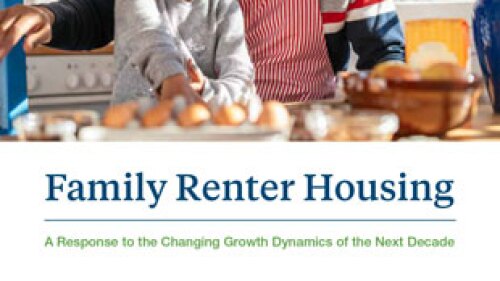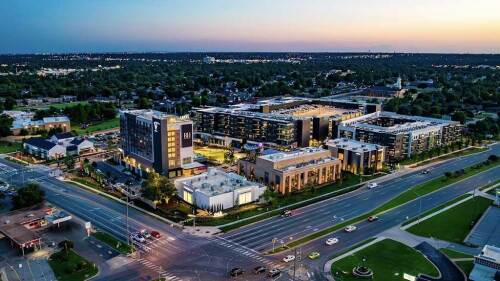Property Types
Hotels and Resorts
Resorts and vacation homes—always the last real estate sector to recover from an economic downturn—are seeing increased activity, but developers are looking toward the future.
Built on land acquired during the Great Recession, Swire’s Brickell City Centre could transform downtown Miami.
In many--and sometimes surprising--ways, 55-and-older consumers are seeking the same housing amenities and lifestyles as their youngers.
Industrial
Advanced manufacturing, which uses high levels of technology in addition to innovative materials and processes, is replacing traditional production in many locations and creating new industrial centers in others. A panel at ULI’s Fall Meeting addressed the changes in manufacturing and how they will affect urban centers.
With e-commerce activity increasing, the real estate market is scrambling to keep up with a new type of building demand that combines distribution centers with fulfillment centers, said experts speaking at the ULI Spring Meeting.
Global e-commerce titans, such as Google and Amazon and China’s Alibaba, are transforming customer expectations on product selection, convenience, and shopping experiences, which may lead to less demand for traditional retail real estate, Jim Tompkins, CEO of Tompkins International, told attendees at ULI’s Midwinter Meeting in Paris last week.
Mixed-Use
ULI MEMBER–ONLY CONTENT:When the old Michael Reese Hospital, dating to the 1880s, closed in 2009, the city rounded up the money to buy the 50-acre (20 ha) site, added more land around it, and then submitted a bid to host the 2016 Summer Olympics with a new stadium replacing the hospital as the centerpiece. Chicago eventually lost that bid but has not given up on the site since.
Voted one of TimeOutmagazine’s “Coolest 40 Neighborhoods in the World,” Uptown is a diverse community on the North Side of Chicago. ULI Fall Meeting attendees got the opportunity to tour the neighborhood, which offers spectacular lakeside views, a growing entertainment district, and a thriving food and cultural scene.
Those who attend the 2021 ULI Fall Meeting in Chicago will have the opportunity to tour mixed-use development near Wrigley Field.
Multifamily
Recently, three new senior housing apartment towers opened in the metropolitan area of Portland, Oregon.
As California pushes toward a clean energy future, the city of San José has emerged as a leader in building electrification, offering valuable lessons for other cities nationwide. With residential buildings representing the largest source of natural gas use in the city, San José’s initiatives aim to reshape how these buildings are powered while prioritizing community needs, equity, and affordable housing. In 2022, ULI partnered with San Jose on an Advisory Services Panel (ASP) to inform this policy direction for multifamily buildings of all types. The aim of the ASP was to support the city in enabling property owners to step up their electrification retrofit efforts, encourage the adoption of on-site solar and batteries, and move the market forward.
The U.S. economy did very well in 2024, said Barbara Denham, lead economist for Oxford Economics, and the forecast for the coming year is more of the same—both in New York City and across North America. However, in presenting Oxford’s favorable economic forecast for 2025 at a ULI New York event last month, Denham also noted many caveats ahead of the incoming U.S. administration.
Office
A close look at trends shaping today’s best economic and talent hubs that offers valuable clues into how to create equitable, sustainable innovation districts that prosper.
In a period short on opportunities and long on challenges, design matters even more. Good design principles are always worth employing, whatever the development climate, but three key design aspects pertain in particular: alliance, resilience, and quality.
Despite headwinds, debt funds continue to fill the void in commercial real estate financing.
Residental
The family-oriented U.S. rental housing stock has failed to focus on older millennials with families who require larger units, according to a new ULI report.
RCLCO’s Neighborhood Atlas framework initially examined the 50 largest metropolitan areas in the country to classify each of their suburbs into one of five categories. RCLCO has expanded its analysis to cover six different types of urban neighborhoods as well, expanding to 100 of America’s largest metropolitan areas.
Solutions are slowly emerging as builders attempt to deliver housing that meets the strong demand from middle-class Americans who struggle to afford a home purchase, according to panelists gathered at a ULI housing conference in February.
Retail
The OAK project began in 2009, when a development firm set their sights on the corner of Northwest Expressway and North Pennsylvania Avenue, the state’s most important and busiest retail intersection. As the region’s only parcel capable of supporting a vertically integrated project of this scale and density, that land represented an opportunity to create something truly special.
As aging retail continue to evolve, one increasingly popular trend has been to redesign malls as town centers—recalling a time when such commercial districts were the heart and soul of a community. Mall–to–town center retrofits are emerging throughout the nation, especially in suburban communities, where pedestrian-friendly, mixed-use environments are highly attractive to millennials now raising families.
Consumers have kept a steady foot on the gas this year. A record-high 197 million consumers shopped in stores or online over the Thanksgiving holiday weekend, according to the National Retail Federation (NRF). The NRF forecasts that holiday sales will grow between 2.5 percent and 3.5 percent, with total retail spending in the United States falling between $979.5 billion and $989 billion during November and December. That forecast also is consistent with NRF’s annual U.S. sales growth—between 2.5 percent and 3.5 percent—for 2024.







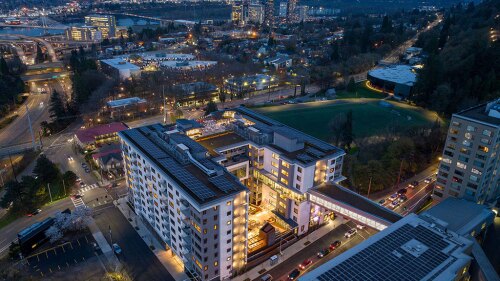


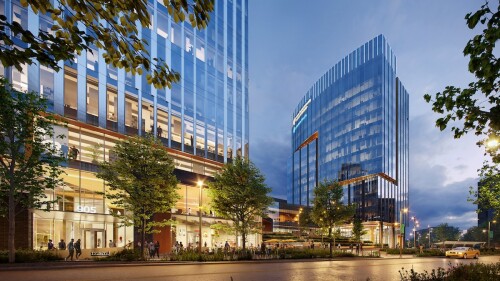
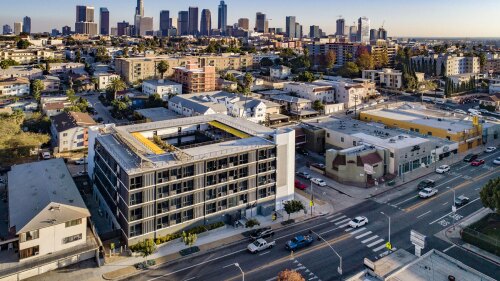
![Western Plaza Improvements [1].jpg](https://cdn-ul.uli.org/dims4/default/15205ec/2147483647/strip/true/crop/1919x1078+0+0/resize/500x281!/quality/90/?url=https%3A%2F%2Fk2-prod-uli.s3.us-east-1.amazonaws.com%2Fbrightspot%2Fb4%2Ffa%2F5da7da1e442091ea01b5d8724354%2Fwestern-plaza-improvements-1.jpg)
